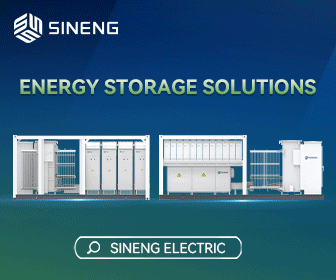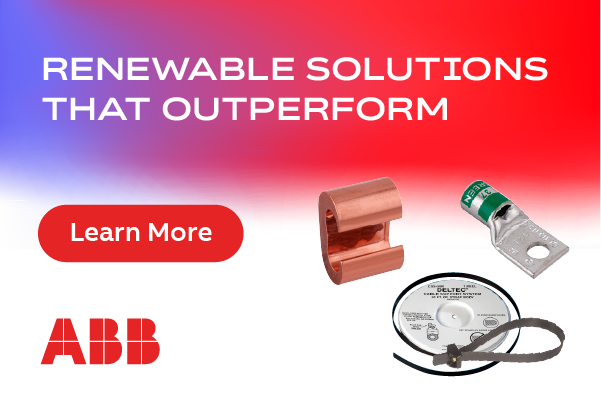Powering Microgrid Applications - With renewable energy & battery storage
Powering Microgrid Applications
With renewable energy & battery storage
By Craig Wilkins
There are proliferations of technology contributing to the evolution of microgrids. However, most microgrids rely heavily on expensive diesel generators. According to IHS research, gen-sets using diesel fuel accounted for the vast majority of total sales in the market in 2013, with $12.1 billion, or approximately 75.6% of revenues (as well as 81.6% of units shipped).
When it comes to a more sustainable energy sources, technology has also come a long way. And, there is good news: diesel consumption in the form of microgrids can be reduced by as much as 75% or more with the incorporation of a well-designed hybrid, renewable generation and energy storage platform.
The combination of low-cost power conversion systems, based on newer insulated-gate bipolar transistor (IGBT) inverter technology—combined with the rapidly following prices of renewable energy generation, such as wind and solar power or even biomass—are greatly contributing to the viability of energy storage as a cost-effective solution for microgrid applications.
This, in turn, is making renewable energy microgrids an attractive alternative to fossil fuel-based ones. However, to be successful in the field and on a project site, a stable microgrid that relies on renewables must also meet the heavy-duty cycle demands with an effective battery.
The battery
Grid-level storage, when used in microgrid applications with a high level of renewable generation, requires batteries with a variety of important features.
These primarily include:
• High power;
• High capacity;
• Rapid cycling between charge and discharge;
• An ability to be fully discharged multiple times per day; and
• A cost-effective price point.
The duty cycles must be designed to minimize diesel fuel consumption by moving the diesel generator role of back-up power to the renewable/battery energy generators. Unfortunately, these duty cycles are hard on battery life, particularly with conventional batteries—which can experience a decreased lifespan anywhere between one-half to one-quarter of normal use.
Research has demonstrated that there are batteries with the right mix of power, capacity, rapid switching time, along with the ability to be deeply discharged without shortening life: namely, flow batteries. In particular, flow battery technology that incorporates a zinc-iron chemistry has been shown to eliminate the environmental and safety risks associated with using large batteries in remote, environmentally sensitive areas.
The research The configuration of energy storage systems and performance requirements in renewable microgrid applications must, simultaneously, be able to support the high variability and intermittency of the energy source, assist with ramp loads, and/morning and/or evening peak demand. In terms of economics, these technologies must have the capability of peak shaving for the morning and evening ramps, as well as fast-response applications, which require rapid cycling at all states of charge.
Ideally, the storage medium should be fully functional across the entire state of charge (SOC), with the ability to provide power equivalent to several full charges and discharges per day. And, as it turns out, these requirements fit quite nicely with modern flow batteries.
As one study demonstrates, mapping a two-megawatt (MW) energy storage system into a grid with wind energy, and 10,219,967 kilowatt-hours per year (kWh/year) of AC load, showed consistent utilization of the battery at the bottom of the charge, as well at the top, providing for available services across the entire SOC. A flow battery in this environment, therefore, provides a consistent capacity balance.
In contrast, other types of batteries, which don’t have full access to the SOC (and, therefore, that must be mitigated with control software) tend to showcase a “weighting away” from the lower state of charges, so as to protect their own material structures. The storage medium, in this case, results in an imbalanced use of renewable generation into the grid. Either the battery is used minimally at the top of charge, or remains unavailable due to the bottom of charge (see Image 1).


The following provides a breakdown.
• Model A: Model of a microgrid with 28 megawatt-hours per day (MWh/day) of AC load, and generation of a 3-MW nameplate of wind energy. This project includes one 4,200 kW diesel generator and one 1,600 kW diesel generator, yielding a system cost of anywhere from $18 million to $23 million.
• Model B: Installing a battery that has an adequate, fast-response capability, but limited energy storage to 70% SOC, reduces the numbers of wind turbines generation to 2.5 MW. It also reduces the use of peak diesel generation by 11%, and can decrease a system cost by 4% to 6%.
• Model C: Incorporating a flow battery with a zinc/iron system that has full capabilities, as well as access to the entire SOC, increases the amount of usable energy. This also decreases the number of wind turbines needed to 2.1 MW, cutting the use of diesel generation by 18%. By using renewable generation and a flow battery storage system, a microgrid can be optimized to achieve 75% savings, or greater.
It’s worth noting that a microgrid can be further optimized by using a 2-MW/2-MWh alternative technology battery. But, the delivered energy cost would be higher because the battery is inherently limited in providing adequate load-shifting requirements, which are needed to support off-peak demands. A 2-MW/2-MWh flow battery, for example, is projected to provide 1,750,713 kWh/year energy input and 1,263,826 kWh/year energy output, for a levelized cost of energy (LCOE) of $0.327/kWh. In contrast, an equivalent lithium-ion battery produces 649,386 kWh/year energy input and 506,898 kWh/year energy output, with a LCOE of $0.391/kWh—a 20% increase over flow batteries.
Conclusion Renewable energy generation offers sustained cost savings over traditional generation methods, such as with diesel generation. The addition of a storage device greatly enhances the stability of the energy generated, while greatly decreasing the cost of energy. Using advanced flow batteries provides an even greater mix of capacity, power, and long life to maximize such savings.
The long-life benefit of flow batteries, along with their ability to support deep discharges multiple times per day, provides evidence of their significance when used in energy storage applications. Simultaneously seeing 100’s or 1,000’s of rapid, short-duration charge/discharge cycles at partial states of charge increases their value.
And, this is especially true when it equates to a substantial return on investment (ROI) for a renewable energy project developer.
Craig Wilkins is the chairman of ViZn Energy Systems, Inc.
ViZn Energy Systems, Inc.
Author: Craig Wilkins
Volume: March/April 2015









